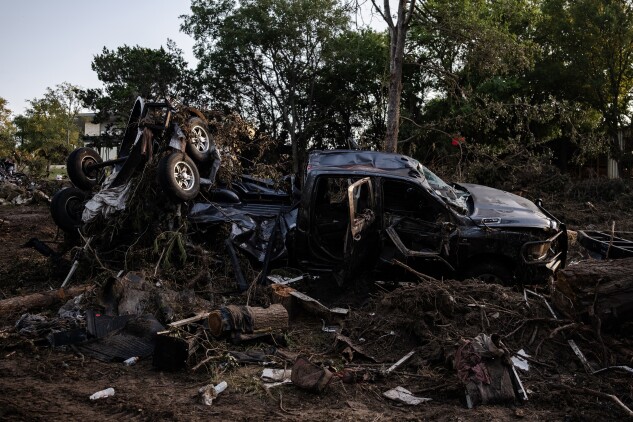- Texas has extensive emergency management infrastructure
- FEMA is focused on filling response gaps, administration says
Devastating Texas floods are renewing debate over the future of disaster response in the US as the Trump administration works to downsize the Federal Emergency Management Agency.
The disaster, which killed more than 100 people over the weekend, has raised questions about whether the Department of Homeland Security should backpedal on efforts to shrink or eliminate FEMA and shift responsibility to the states — and whether initial steps contributed to the scale of destruction in Texas.
“We must also determine if any budget cuts or staffing shortages—of any kind—made matters worse,”
Emergency management professionals regularly tout Texas as one of few states with robust capacity to handle disasters without extensive federal support. Yet Gov.
The fact that Texas, with its expansive emergency response infrastructure, needed federal assistance shows how unrealistic it is for any state to manage alone, said one retiring FEMA official in Texas, who spoke anonymously for fear of retribution.
Homeland Security Secretary
“Many states do not do what the people of Texas do,” she said at a briefing over the weekend. “And you are an example to the nation of getting through these difficult times, but also know that you’re not alone.”
FEMA Cuts
Trump has pledged to downsize or even eliminate FEMA since his time on the campaign trail. He created a council to explore overhaul options earlier this year and issued an executive order promoting greater state and local roles in emergency management.
Noem has also eliminated several FEMA programs, terminated hundreds of employees, and restricted contract renewals for groups of disaster response personnel. Several top FEMA officials have stepped down, including Tony Robinson, who led Region 6, which covers Texas. Some of the cuts and rhetoric have prompted bipartisan pushback on Capitol Hill.
Homeland Chief’s Call to Ax FEMA Causes Bipartisan Heartburn
Federal watchdog Chris Currie said his team at the Government Accountability Office is still trying to quantify the scope of cuts to FEMA’s workforce through layoffs and early resignations and how it’s affecting their ability to respond to disasters. FEMA’s mission hasn’t changed, he said in an interview. “but they’re doing it with less people.”
The Texas floods show that even states with strong emergency response programs have limits, said Currie, a director on the GAO’s homeland security and justice team.
“Just because a state has good capacity and experience doesn’t mean that every county or part of the state does,” he said.
Thompson, the Homeland Security Committee Democrat, called on Trump to nominate an experienced FEMA administrator and “call off plans to eliminate and phase out FEMA.”
The biggest concern is the cumulative drain on federal resources ahead of the peak of hurricane season later this summer, Currie said.
“As you lead up to the part of this hurricane season that we’re always worried about — late August, September — I’m concerned with the capacity issues,” Currie said. “It’s not just FEMA. The agencies FEMA relies on — EPA, the Corps of Engineers — they’re smaller too, they’ve downsized.”
The National Weather Service is also the subject of added scrutiny, as Democratic lawmakers raise questions about whether staffing cuts at the agency, which is part of the National Oceanic and Atmospheric Administration, contributed to the scale of destruction in the Texas floods.
Commerce Seeks to Make it Easier to Fire Probationary Employees
‘Political Punching Bag’
The Trump administration and its GOP allies on Capitol Hill have defended federal agency actions in response to the Texas floods and accused Democrats of politicizing the disaster.
“I am disappointed that some on the other side of the aisle have chosen to turn this horrific tragedy, which has taken so many precious lives, into a political punching bag,” Rep.
Rep. Dale Strong (R-Ala.), who leads the panel’s emergency management subcommittee, credited the Trump administration for surging FEMA and other federal resources to Texas.
White House Press Secretary Karoline Leavitt on Monday said the administration will continue discussing the appropriate balance of state and federal resources in disaster response.
“Look, the president wants to ensure American citizens always have what they need during times of need,” she said during a briefing. “Whether that assistance comes from states or the federal government, that’s a policy discussion that will continue. And the president has always said he wants states to do as much as they can, if not more.”
To contact the reporter on this story:
To contact the editors responsible for this story:

